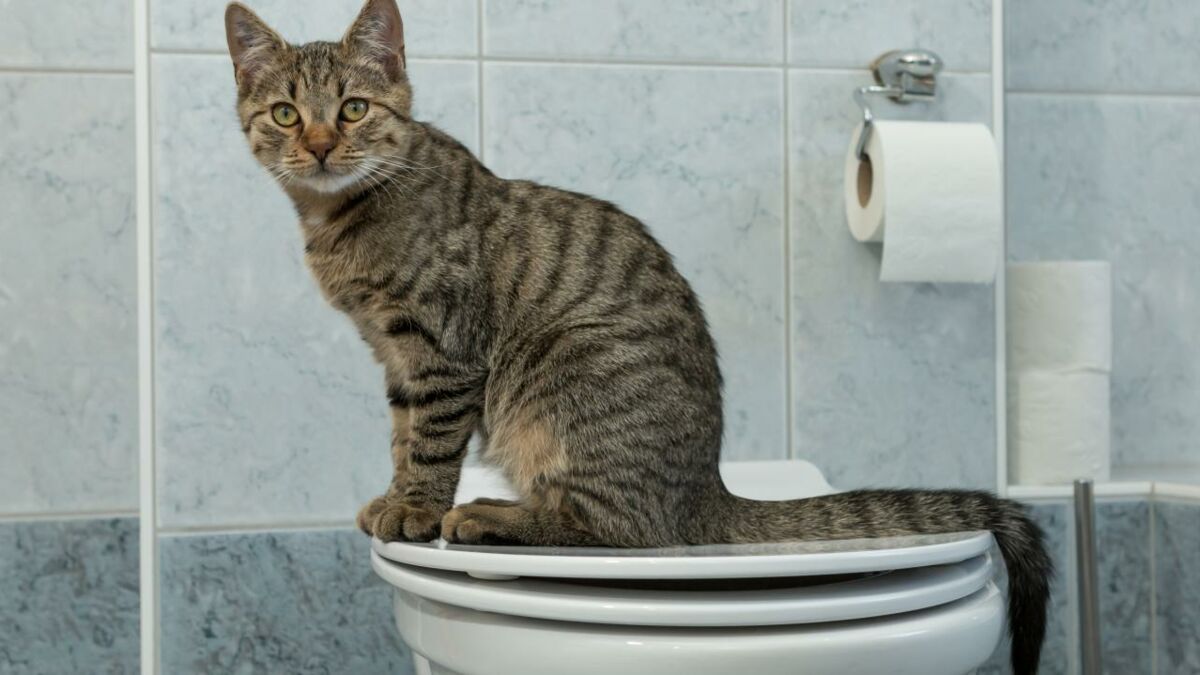The Dangers of Flushing Cat Poop Down Your Toilet - Advice for Better Disposal
The Dangers of Flushing Cat Poop Down Your Toilet - Advice for Better Disposal
Blog Article
Nearly everybody may have their own individual opinion when it comes to How to Dispose of Cat Poop and Litter Without Plastic Bags.

Introduction
As pet cat proprietors, it's necessary to bear in mind exactly how we get rid of our feline buddies' waste. While it may appear practical to flush pet cat poop down the commode, this method can have harmful consequences for both the setting and human wellness.
Environmental Impact
Flushing pet cat poop introduces harmful virus and parasites into the water, presenting a significant threat to marine environments. These contaminants can adversely impact aquatic life and compromise water quality.
Health and wellness Risks
In addition to ecological issues, purging feline waste can also posture health and wellness risks to people. Cat feces might contain Toxoplasma gondii, a bloodsucker that can cause toxoplasmosis-- a possibly severe health problem, particularly for pregnant ladies and people with weakened body immune systems.
Alternatives to Flushing
Thankfully, there are more secure and much more liable ways to throw away cat poop. Think about the following choices:
1. Scoop and Dispose in Trash
The most typical approach of getting rid of pet cat poop is to scoop it into a naturally degradable bag and toss it in the trash. Make sure to make use of a dedicated trash inside story and dispose of the waste quickly.
2. Use Biodegradable Litter
Choose naturally degradable pet cat litter made from materials such as corn or wheat. These clutters are eco-friendly and can be securely dealt with in the trash.
3. Hide in the Yard
If you have a backyard, consider burying feline waste in a marked area away from vegetable gardens and water sources. Make certain to dig deep enough to avoid contamination of groundwater.
4. Set Up a Pet Waste Disposal System
Invest in an animal waste disposal system specifically designed for feline waste. These systems use enzymes to break down the waste, decreasing odor and environmental effect.
Conclusion
Accountable animal ownership expands past providing food and sanctuary-- it additionally includes proper waste monitoring. By avoiding flushing cat poop down the commode and selecting alternate disposal methods, we can decrease our ecological footprint and protect human wellness.
Why Can’t I Flush Cat Poop?
It Spreads a Parasite
Cats are frequently infected with a parasite called toxoplasma gondii. The parasite causes an infection called toxoplasmosis. It is usually harmless to cats. The parasite only uses cat poop as a host for its eggs. Otherwise, the cat’s immune system usually keeps the infection at low enough levels to maintain its own health. But it does not stop the develop of eggs. These eggs are tiny and surprisingly tough. They may survive for a year before they begin to grow. But that’s the problem.
Our wastewater system is not designed to deal with toxoplasmosis eggs. Instead, most eggs will flush from your toilet into sewers and wastewater management plants. After the sewage is treated for many other harmful things in it, it is typically released into local rivers, lakes, or oceans. Here, the toxoplasmosis eggs can find new hosts, including starfish, crabs, otters, and many other wildlife. For many, this is a significant risk to their health. Toxoplasmosis can also end up infecting water sources that are important for agriculture, which means our deer, pigs, and sheep can get infected too.
Is There Risk to Humans?
There can be a risk to human life from flushing cat poop down the toilet. If you do so, the parasites from your cat’s poop can end up in shellfish, game animals, or livestock. If this meat is then served raw or undercooked, the people who eat it can get sick.
In fact, according to the CDC, 40 million people in the United States are infected with toxoplasma gondii. They get it from exposure to infected seafood, or from some kind of cat poop contamination, like drinking from a stream that is contaminated or touching anything that has come into contact with cat poop. That includes just cleaning a cat litter box.
Most people who get infected with these parasites will not develop any symptoms. However, for pregnant women or for those with compromised immune systems, the parasite can cause severe health problems.
How to Handle Cat Poop
The best way to handle cat poop is actually to clean the box more often. The eggs that the parasite sheds will not become active until one to five days after the cat poops. That means that if you clean daily, you’re much less likely to come into direct contact with infectious eggs.
That said, always dispose of cat poop in the garbage and not down the toilet. Wash your hands before and after you clean the litter box, and bring the bag of poop right outside to your garbage bins.
https://trenchlesssolutionsusa.com/why-cant-i-flush-cat-poop/

I was shown that write-up about How to Dispose of Cat Poop and Litter Without Plastic Bags from an associate on another web address. So long as you liked our blog posting if you please remember to pass it around. Thank you for taking the time to read it.
Book An Estimate Now Report this page